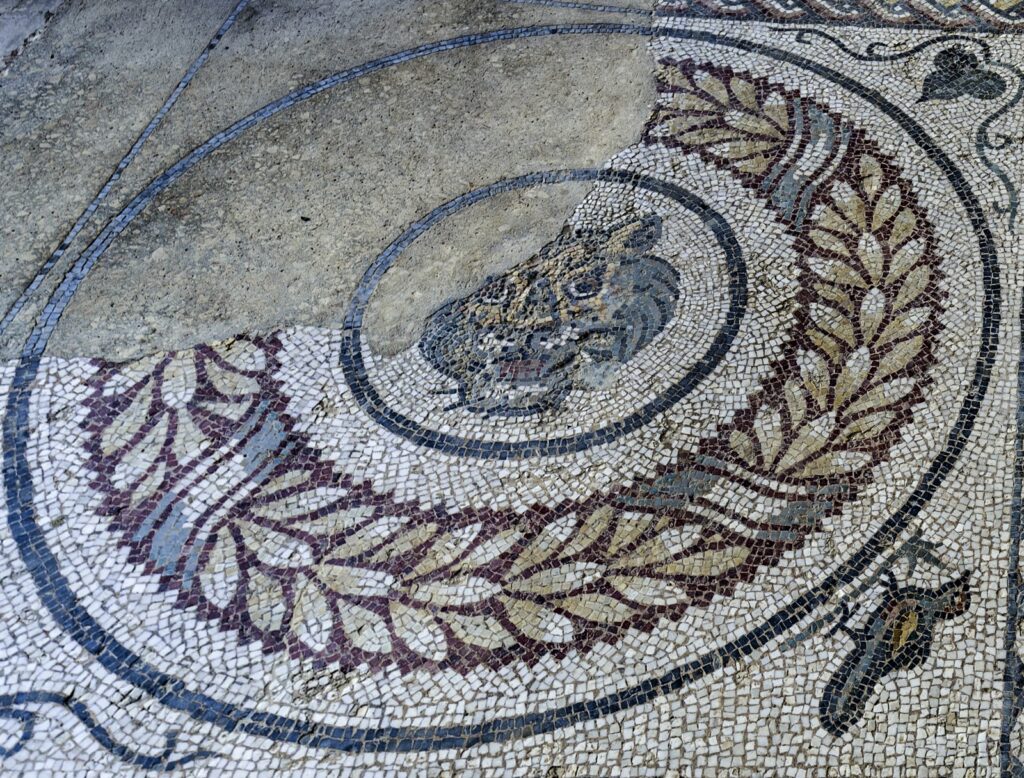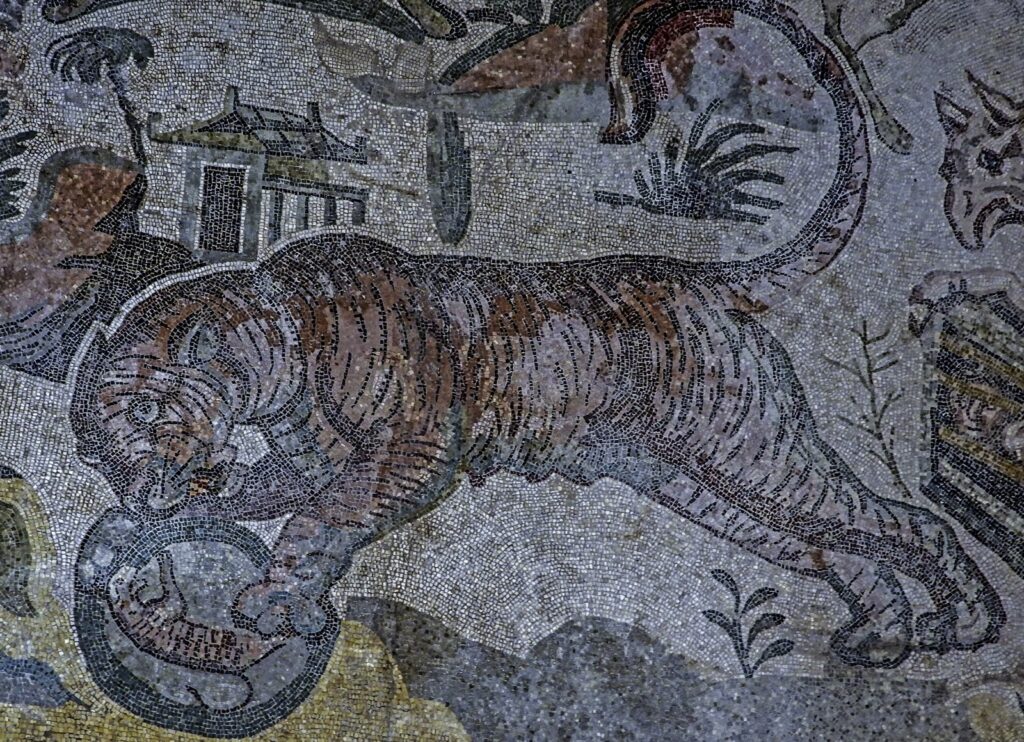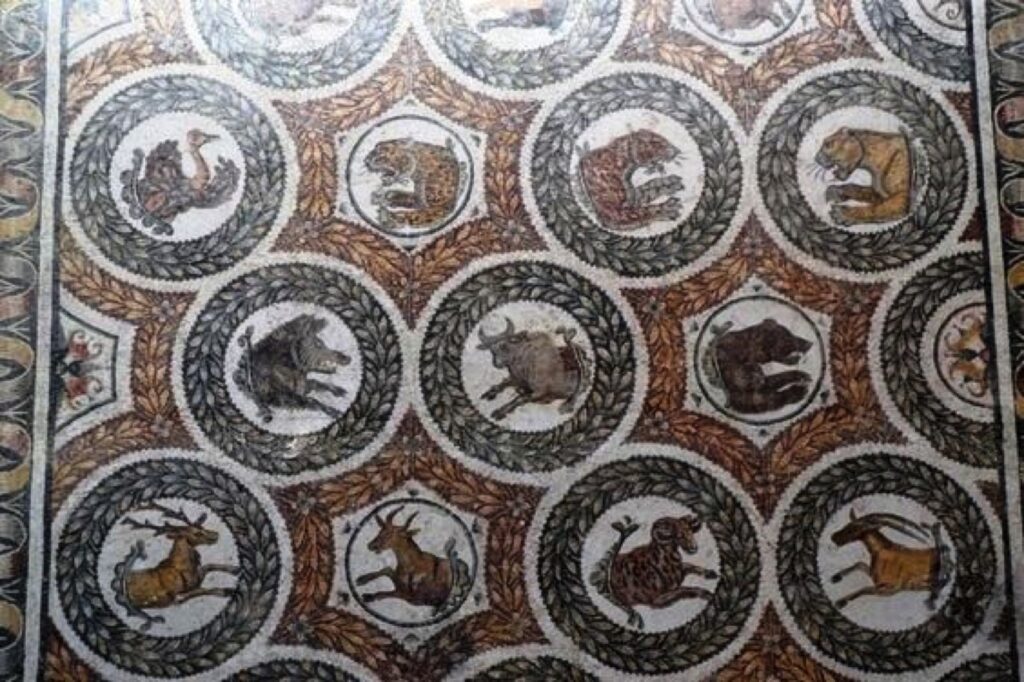The choice of subjects and scenes that animate the floor decorations of the Villa Romana del Casale is not random. A precise iconographic program was skilfully translated by groups of workers, even from North Africa, who used their knowledge to enrich the models already used by mosaicists on the island. The well-thought-out insertion of animal protomes within a geometric scheme as a floor decoration of the peristyle, according to some theories, goes beyond the simple aesthetic and decorative criterion to represent hunting trophies and become a prelude to the decorated scenes of capture in the “corridor of the great hunt”.
according to some theories, goes beyond the simple aesthetic and decorative criterion to represent hunting trophies and become a prelude to the decorated scenes of capture in the “corridor of the great hunt”. An alternative could, instead, relate the catalogue of animals directly to the figurative mosaic of the vestibule if we consider it an extensive representation of masks. Of the hypotheses put forward over time, the vestibule scene has been linked to the January feasts when it was customary to dress up.
An alternative could, instead, relate the catalogue of animals directly to the figurative mosaic of the vestibule if we consider it an extensive representation of masks. Of the hypotheses put forward over time, the vestibule scene has been linked to the January feasts when it was customary to dress up.
By analogy, the use of tiles that can be traced back to the rigorous depiction of the animal faces that populate the mosaic decoration of the peristyle, can be found in the Mosaic of the Protomes, originally located in the House of Protomes of Thuburbo Majus (present day Henchir el-Kasbat) and now preserved in the Bardo National Museum in Tunisia.  Its location within the North African domus was adjacent to a scene of animal fighting reminiscent of the “catalogue of animals – scenes of venationes or combat” duo present in Piazza Armerina. The evident similarities between decorative models in non-neighbouring territories have reinforced the idea that in the 4th century AD there was a wide diffusion of subjects due to frequent movements of workers.
Its location within the North African domus was adjacent to a scene of animal fighting reminiscent of the “catalogue of animals – scenes of venationes or combat” duo present in Piazza Armerina. The evident similarities between decorative models in non-neighbouring territories have reinforced the idea that in the 4th century AD there was a wide diffusion of subjects due to frequent movements of workers.